Vienna is one of the centers of European civilization, the former capital of the Holy Roman Empire, which was ruled by the legendary Habsburg dynasty for six centuries. For several centuries Vienna remained the most important cultural artery along with Paris, Rome and Berlin. Many attributes of life in the Austrian capital, personifying quality and taste, are firmly rooted in our everyday life. Viennese sausages and Viennese schnitzel, Viennese chairs and Viennese coffee, Viennese waffles and Viennese waltz … We are especially proud of the numerous museums in Vienna, presenting rich expositions for every taste. Vienna was a trendsetter in art, music and science. Today, this rich heritage is carefully preserved, including in numerous museums in Vienna, which do not leave indifferent visitors with a wide variety of tastes and interests. Palace museums, art and technical, scientific and musical, children’s and entertainment … We will tell you about the most important, interesting and must-see museums in Vienna.
Top Vienna museums: content
Palace Museums
Art museums in Vienna
Science and history museums
Thematic museums in Vienna
Children’s Museum ZOOM
Vienna Museum Quarter
Vienna museums: practical information
Vienna museums on the map
Hobfburg (Hofburg)
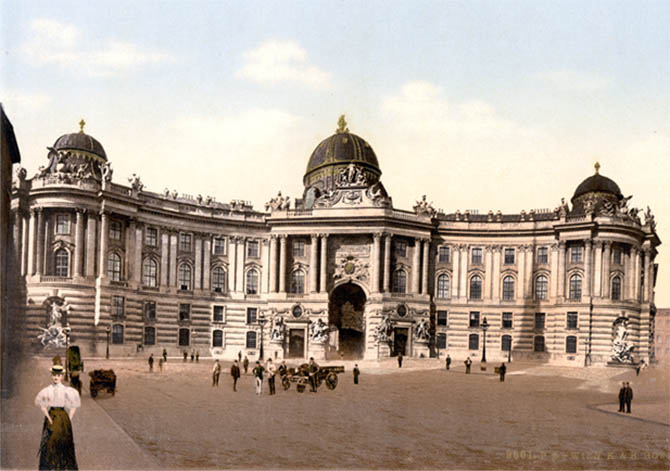
Vienna’s Hofburg is one of the largest imperial palaces in the world. For over six centuries it served as the winter residence of the Habsburgs. The oldest buildings date back to the XIII century, construction continued until the XX. Today, the palace complex houses luxurious museums, a Spanish Riding School, a congress center, the residence of the Federal President of Austria, as well as the historic Heldenplatz square.
Sissi Museum
The museum presents a large exhibition of personal belongings of the popularly beloved Empress Elizabeth of Bavaria, known as Sissi (as her relatives called her). There are beautiful outfits, luxurious jewelry, and exhibits reminiscent of the life and unusual history of Empress Sissi. To get a stronger impression from the exhibition, we recommend that you familiarize yourself with the very amusing biography of the Empress (by the way, we talk about it in our Hofburg audio guide ).
Imperial Apartments and the Silver Chamber
These parts of the Hofburg can be visited with the Sissi Museum on a shared ticket. All these exhibitions are located in one part of the palace complex – in the Wing of the Imperial Chancellery. Here you can see 24 luxurious imperial rooms, decorated in the rococo style. And also a huge collection of beautiful dishes and various kitchen utensils.
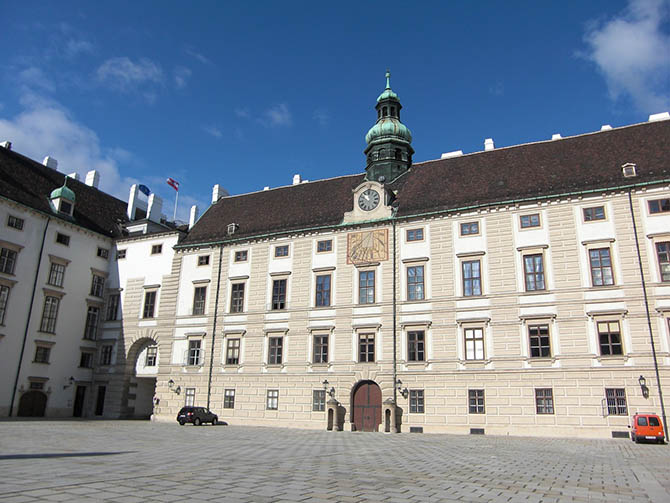
Imperial Treasury (Kaiserliche Schatzkammer)
The Imperial Treasury is part of the Hofburg Palace. It is here that the legendary crown of Charlemagne is kept, which was worn on the heads of almost all German monarchs of the early Middle Ages. You will also see the treasures of the Order of the Golden Fleece, the original jewelry of Empress Elizabeth and one of the world’s largest emeralds. One of the greatest Christian shrines deserves special mention: the Vienna Spear, or the Spear of St. Mauritius. It is considered the original of one of the Instruments of the Passion of Christ. The exposition of the treasury includes both secular and religious exhibits.
Schönbrunn (Schloß Schönbrunn)
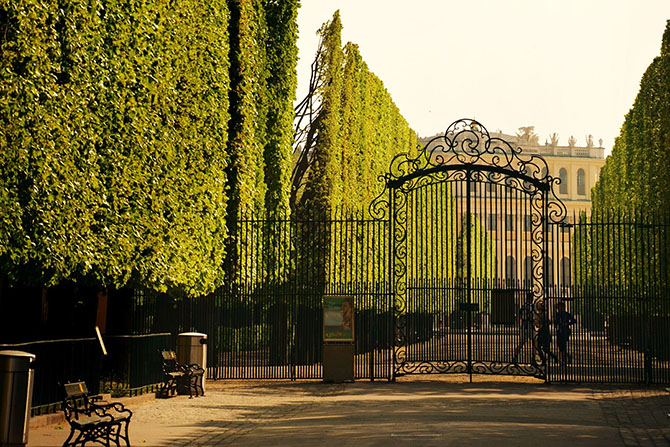
One of the pearls of the Austrian Baroque, the summer residence of the Habsburgs, a favorite walking place for both residents of Vienna and guests of the Austrian capital. Schönbrunn is one of the most remarkable palace and park ensembles in Europe and perhaps the most popular tourist location in Vienna.
The name of this palace and also the museum comes from Schöne Brunnen – in German “beautiful springs”. According to legend, these sources were discovered by Emperor Matthias II at the beginning of the 17th century, when he was hunting in these places.
During the reign of Empress Maria Theresa, the Schönbrunn palace complex acquired state status, became the focus of political and cultural life. From the moment of its foundation and until the abdication of Charles I from the throne, Schönnbrug served as the residence of the Habsburgs, the rulers of Austria. The beauty of the interior and exterior of the palace, as well as the park complex, became the reason for the inclusion of Schönbrunn in the UNESCO list.
Park Schönbrunn
A huge and beautiful park deserves special attention, which occupies about 120 hectares around the Schönbrunn Palace. It is listed as a UNESCO World Heritage Site. Created in the best traditions of classic gardening art, it still amazes with the exquisite geometry of flower beds, especially beautiful for their multicolored spring and summer. Visitors love to stroll along carefully tidied alleys and shady galleries, admiring the landscapes and beautiful statues along the way, enjoying the silence and purity of the air of this amazing place. Don’t forget to visit the Labyrinth and see the fountains. And if you need to pay to visit the palace, then you can take a walk in the park for free!
Zoo Tiergarten Schönbrunn in Vienna
In the middle of the 18th century, by order of Emperor Franz I, the wife of Maria Theresa, a menagerie was founded in the vicinity of the palace, which later grew up and today is known as the Schönbrunn Zoo (Tiergarten Schönbrunn), the oldest in the world!
On the territory of 17 hectares, visitors can see more than 700 different species of animals from all over the world, some of which are endangered. Among them are giraffes, for which a special gallery has been arranged, dexterous orangutans climbing from branch to branch, mighty Siberian tigers lazily dozing in their enclosures, African elephants taking mud baths. You can also visit a bird house, a farm with old breeds of domestic animals, admire predators and polar animals.
Belvedere
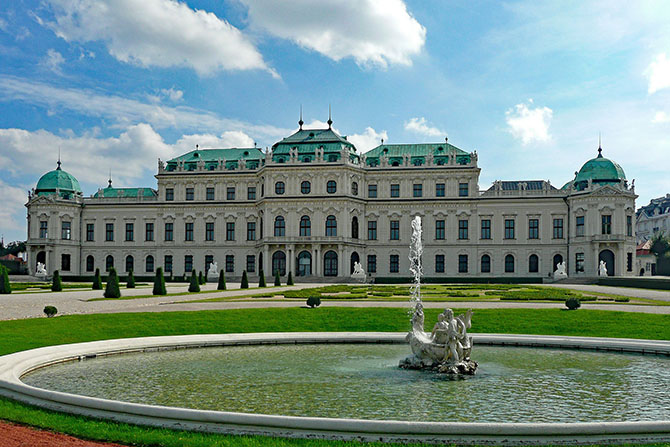
A unique complex with two palaces, the Upper and Lower Belvedere and an extensive garden and park area, is one of the most luxurious Baroque ensembles in the world. It was designed by the architect Johann Lucas von Hildebrandt as his summer residence for Prince Eugene of Savoy. The construction was completed in 1723. After the death of the prince, the Belvedere became the property of the Empress Maria Theresa, who turned the Upper Belvedere into an exhibition area. Belvedere is one of the first public museums in the world. People come here to enjoy the most significant collection of works by Gustav Klimt, including his famous “The Kiss”. The permanent exhibition also includes paintings by Van Gogh, Monet, Manet and Renoir.
Museum Kunsthistorisches Museum Vienna
The Museum of Art History in Vienna is one of the most famous museums in the world. It was built in the 19th century to house the vast collections of the Habbsburg royal dynasty.
The museum contains exhibits covering five millennia – from Ancient Egypt to the end of the 18th century. The Habsburgs managed to collect the brilliant works of almost all significant Italian masters – from the early Renaissance to the Baroque and Mannerism. The art gallery exhibits works by Dürer, Raphael, Rembrandt, Rubens, Titian, Velazquez and Vermeer, as well as the world’s largest collection of Bruegel’s paintings. And in the Kunstkamera, the world famous Saliera (“Salt cellar”), the only jewelry work of Benvenuto Cellini is exhibited.
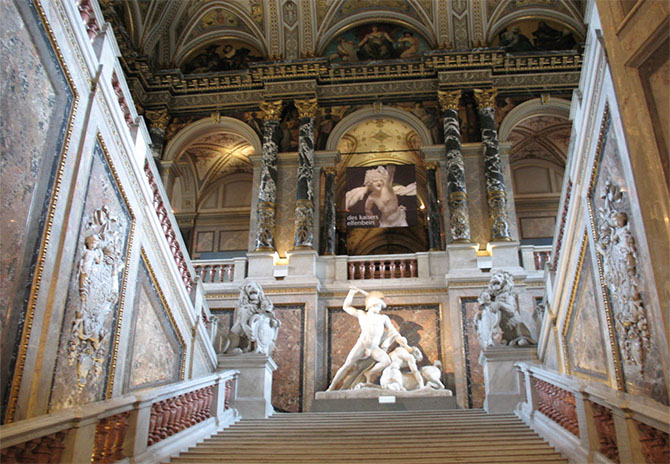 By the way, the building of the museum, decorated in the style of the Italian Renaissance, has a twin brother – the Museum of Natural History, standing nearby. Albertina Gallery (Albertina)
By the way, the building of the museum, decorated in the style of the Italian Renaissance, has a twin brother – the Museum of Natural History, standing nearby. Albertina Gallery (Albertina)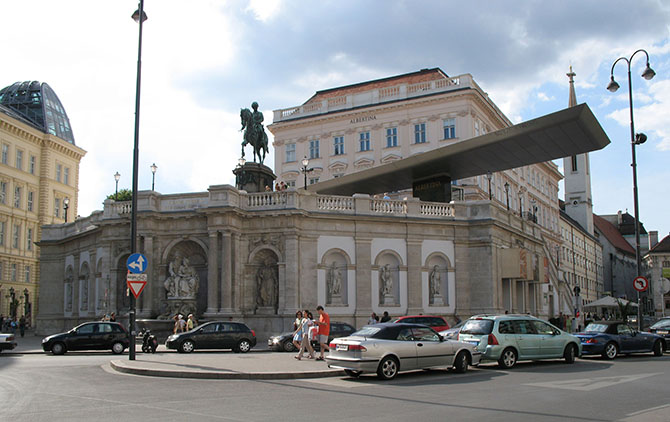
The Albertina Gallery in Vienna is one of the world’s largest collections of painting and graphics. Here are about 65 thousand drawings and more than 1 million graphic masterpieces: from Leonardo da Vinci and Rembrandt to Monet and Degas. Albertina’s special pride is a unique collection of paintings from the turn of the 19th and 20th centuries, which includes canvases by Monet, Degas, Cézanne, Toulouse-Lautrec and Gauguin, as well as works by outstanding masters of the Russian avant-garde: Goncharova, Malevich, Chagall. Of particular interest are the numerous paintings by Picasso, from early Cubism and canvases from the mature period of the 1940s to the excellent prints and paintings of the later period.
The Museum is named after its founder, Duke Albert (or Albrecht) of Saxony-Teschensky. It is in his former palace, not far from the Hofburg, that the famous collection is located. For more information on the history of this building, see the audio tour of the historic center of Vienna , available in the Travelry ap
Leopold Museum
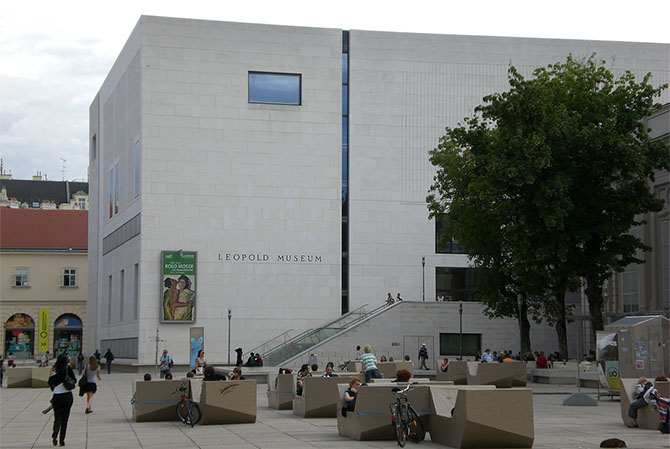
This art museum is located in the MuseumsQuartier, near the center of the Austrian capital … It was founded by a married couple of art collectors – Rudolph and Elizabeth Leopold. It houses the world’s largest collection of Egon Schiele (about 250 paintings), one of the most prominent representatives of Austrian impressionism.
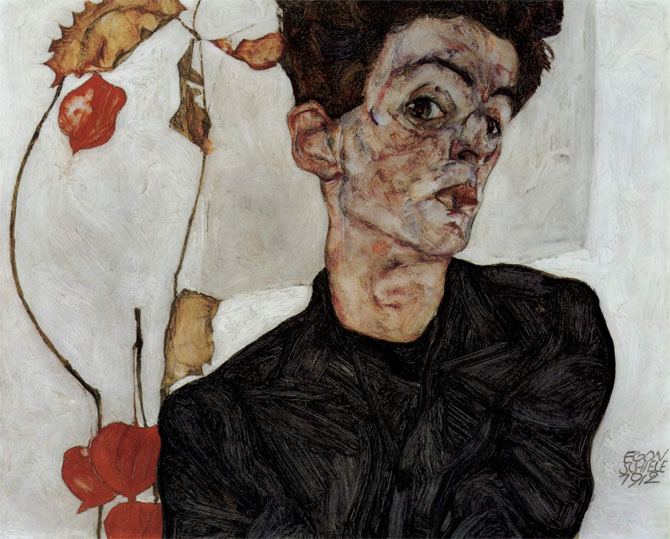
In addition, the museum displays a number of works by G. Klimt, another innovative artist who has left a noticeable mark on modern painting. In addition to artistic canvases, the exposition offers a rich collection of graphics, as well as interior items and furniture of the turn of the 19th – 20th centuries.
Museum Moderner Kunst Stiftung Ludwig Wien (Museum Moderner Kunst Stiftung Ludwig Wien)

Already the appearance of the building of the MUMOK Museum, or the Museum of Contemporary Art of the Ludwig Foundation, suggests that something unusual awaits you inside. The rugged cubic structure stands out among the many structures of the lush imperial capital. And inside, contemporary art is presented in all its contradictions
Museum Natural History (Naturhistorisches Museum)
The Museum of Natural History, opened in 1889, today is one of the most authoritative collections in natural history. It was intended to house the impressive collections of natural artifacts that the Habsburgs have collected over many generations. The number of museum exhibits exceeds 20 (!) Million – artifacts from almost all eras and periods of the planet’s history are presented. Here is concentrated a huge collection of minerals and precious stones, the world’s largest exposition of meteorites and fossils. The audience is interested in such unique exhibits as a figurine of Venus from the Willendorf Paleolithic era, whose age is estimated at 29,500 years, a giant sea cow or cyclopean skeletons of dinosaurs, as well as numerous samples of extinct animals and plants.
Several years ago, the museum launched a new digital planetarium with full-scale projection technology. With its help, viewers can go on exciting journeys into the depths of the Milky Way or the rings of Saturn with stunning visual detail.
Museum Karlsplatz, or Wien Museum Karlsplatz
The museum has existed since 1887 and allows you to immerse yourself in the history of Vienna, starting from the ancient Roman period. Interesting archaeological finds and exhibits from the Middle Ages are presented here. In addition, an interesting collection of historical costumes and works of art: from the Baroque to the 20th century.
Military History Museum ( Heeresgeschichtliches Museum )
More precisely, it is the Austrian Army Museum, the oldest military history museum in the world and the largest, built for this purpose in the middle of the 19th century. by order of Emperor Franz Joseph I. It is located near the Belvedere palace complex. Outside, visitors are greeted by an impressive collection of bronze cannons, one of the most complete in the world. The collection reflects the formation and development of the Austrian armed forces from the 16th to the middle of the 20th century. Here, at the Vienna Arsenal, you can see weapons, uniforms, armored vehicles, aircraft, standards, paintings, medals, archival photographs and documents.
Museum Technology (Technisches Museum)
One of the oldest and most complete thematic collections, its history dates back to 1909. Thousands of artifacts are on display in extensive exhibitions, from the first typewriters and telephones to modern trains and airplanes. Moreover, all this is not only stored, but also works, despite its venerable age. The largest collection of historical musical instruments in Austria, from antiquity to the present, deserves special mention. In addition to traditional “real” expositions, the museum halls have many virtual interactive viewpoints, which are enjoyed by both adults and children.
House of Music (Haus der Musik)
Lovers of music and modern technology will be delighted with this place. The Vienna House of Music is an interactive museum of a new format, which allows you not only to look at exhibits in the old fashioned way, but to travel around the world of music using modern technologies. For example, you can try on the role of a composer or even virtually conduct the Vienna Philharmonic Orchestra. And of course, learn a lot about famous Viennese composers: Strauss, Mozart, Haydn, Beethoven, Mahler and others.
The museum’s interactive exhibition halls are located on 5 floors of the ancient palace of Archduke Karl (Palais von Erzherzog Karl) Mozarthaus (Mozarthaus)
This is the largest and most expensive house in which a great musician could afford to live. It stands in the very center of Vienna near St. Stephen’s Cathedral. The Mozart family lived here for 4 years, from 1784 to 1787. By that time, Mozart was already famous, the composer-pianist was a welcome guest in the best houses in Vienna. He, his wife Constance and newly born son Karl Thomas occupied an apartment on the second floor: 4 rooms, 2 offices and a kitchen.
It was in this place that the opera “The Marriage of Figaro” was written. You will see Mozart’s personal belongings and, in particular, the musical clock playing the Andante for organ. The original interior has not survived, but the furnishings are kept in the spirit of the times. Domgasse 5 is the only Mozart apartment in Vienna that still exists. He did not compose more music anywhere.
Madame Tussauds
Vienna also has its own wax museum. Several halls housed masterfully executed, “like living” figures of world celebrities: the President of the United States, the Pope, Agent 007, film stars, rock idols, Mozart, Beethoven, Freud. Their scenic scenes are the perfect setting for memorable selfies. The museum is located in the Prater park area on the banks of the Danube. It is preferable to order tickets online, as it will be a little cheaper.
Sigmund Freud Museum
Museum-apartment of the founder of psychoanalysis. Here he received patients, was engaged in scientific work, wrote books on psychology. Freud lived in this house for almost half a century until 1938, when, after the Anschluss of Austria, Germany was forced to flee and seek refuge in England.
The idea of creating a museum belongs to Anna, Freud’s youngest daughter. Thanks to her, the original furnishings have been preserved. The museum opened its doors in 1971. The halls display Freud’s personal antique collection, lifetime editions of his works, the video hall displays unique film materials with Anna’s comments.
Children’s Museum ZOOM (ZOOM Kindermuseum)
One of the best children’s museums in Europe! A grandiose interactive center that has a place for learning, entertainment and creativity. Draw, build, tinker, play, try on different professions, create cartoons, shoot movies, sew costumes – children can do so much here that they can’t even name it! Fascinating and useful activities will be found both for the youngest visitors (under 6 years old) and for older children.
The museum is so popular that you need to buy tickets and book a visit in advance. Online booking possible.
The cost of tickets depends on which zones of the museum and which events you plan to visit. You can check the prices here. And here – book a visit (no later than an hour before the visit):
Museumsquartier / MQ
If you want to visit several museums, go to Vienna’s Museum Quarter (Museumquartier, or simply MQ) is considered the world’s largest museum complex in the world! On an area of 60,000 sq. meters away there is a wide variety of museums and cultural venues, as well as restaurants, cafes and shops. Here baroque and modern postmodern architecture, ancient and modern art are combined in an amazing way. The famous children’s museum ZOOM, Leopold Museum, Museum of Art History , Museum of Contemporary Art and many other exhibitions and exhibition complexes – there is something interesting for every taste.
Tickets
In order not to waste time in queues and ticket offices, it is worth buying tickets in advance, online – on the official websites of museums (in the article you will find links) or, for example, in this online service (booking in Russian is available).
Discounts with tourist cards
If you are planning to actively visit museums, you can save on tickets by purchasing the Vienna Card or Vienna Pass. The Vienna Card allows discounted visits to over 200 Vienna attractions and free travel on public transport. You can buy the card on the official website or through the Tiqets service.
Viena Pass costs significantly more, but not only gives a discount, but allows you to visit more than 60 Vienna attractions, including many museums, completely free of charge. You can find out more details and purchase the card on the official website.
Operating mode
Most museums in Vienna are open every day. But some have one day off, usually Monday or Tuesday.
